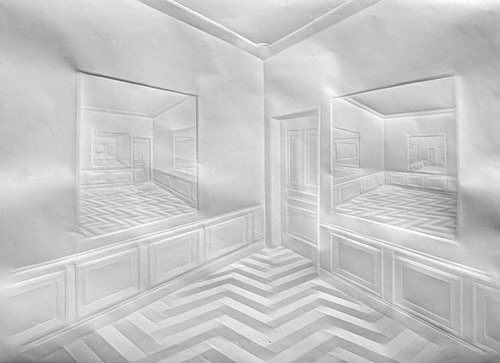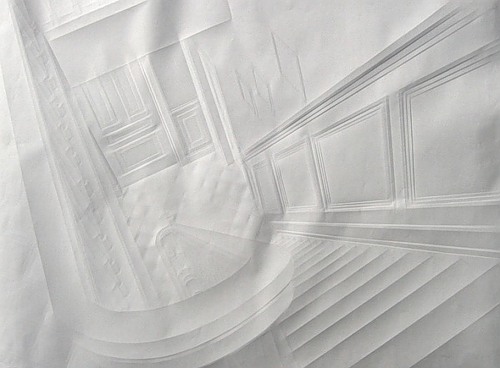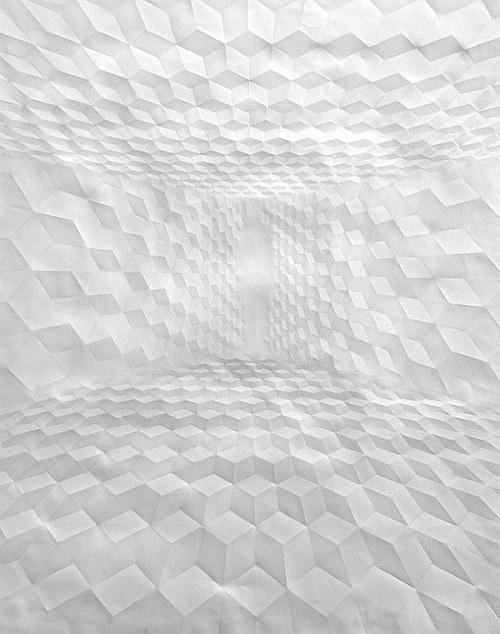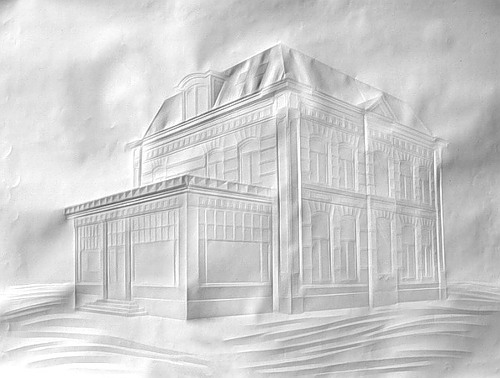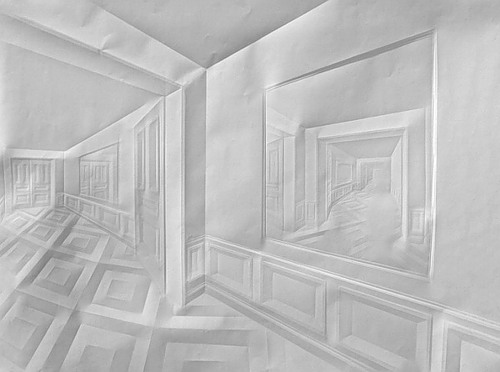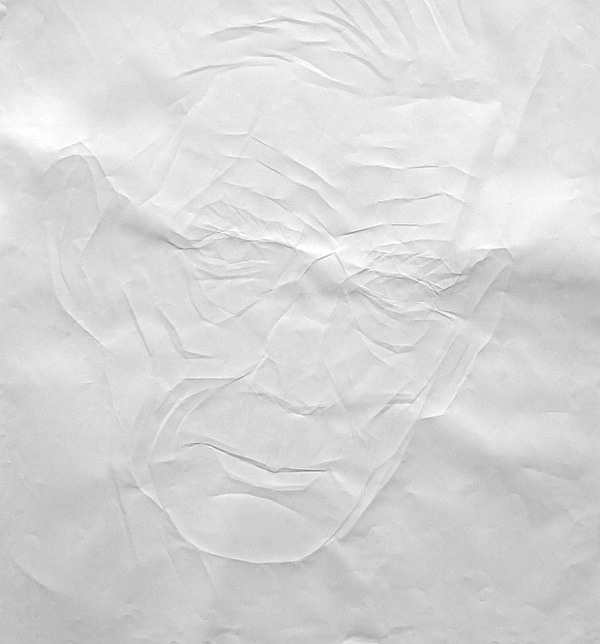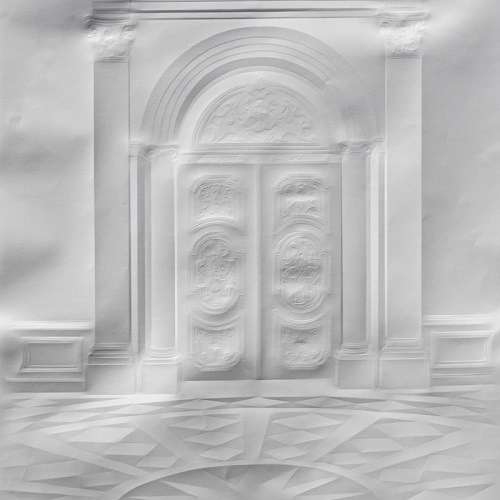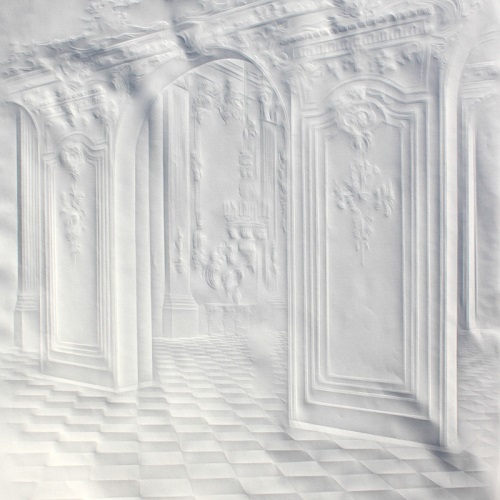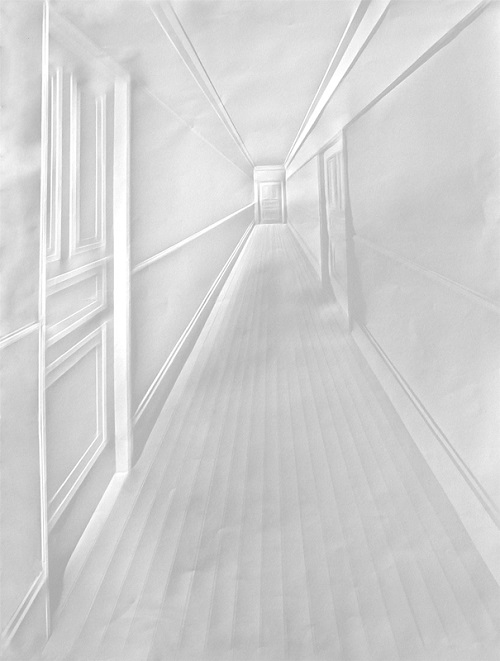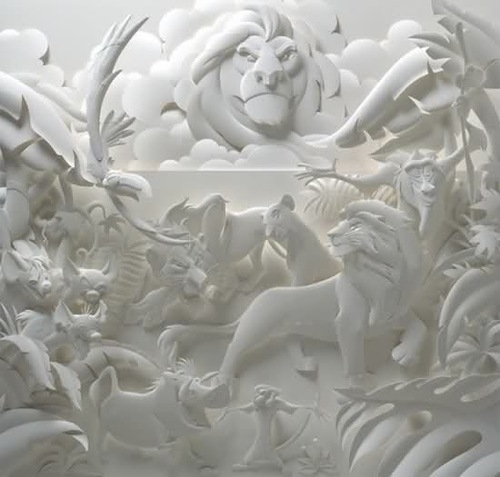Simon Schuberts paper art
Simon Schuberts paper art
According to German artist Simon Schubert, he starts his work in the simplest way you can imagine – with a blank sheet of paper. From there, with a set of folds, he leaves the traces that come together to created drawings. Noteworthy, the drawings that look as if drawn with invisible ink. The result, for the simplicity of the means used, is beautiful and seductive. Simon Schubert first folded paperwork in 2003, it was a portrait of novelist and playwright Samuel Beckett. ‘I wanted to find a way to make a portrait on different levels, on the one hand the face, on the other hand, I was interested in the reduction of material and technique and the fading into white in reference to Samuel Beckett’s work’.
Born in 1976, in Cologne, Germany, he became attached to the art world from a young age. Strongly inspired by Surrealism and by Samuel Beckett, Schubert’s work comprehends architectural themes, usual situations and every-day objects, for the most part.
Although he uses several sophisticated materials in some of his work, it was with the simplicity of his paper folding that most of his work became known to the public. ‘I work with my paper folding technique to create the folded paper reliefs and different other techniques to build my sculptures. for the sculptures,’ he explains. ‘I use all kind of techniques to achieve a realistic, illusionary result.’
